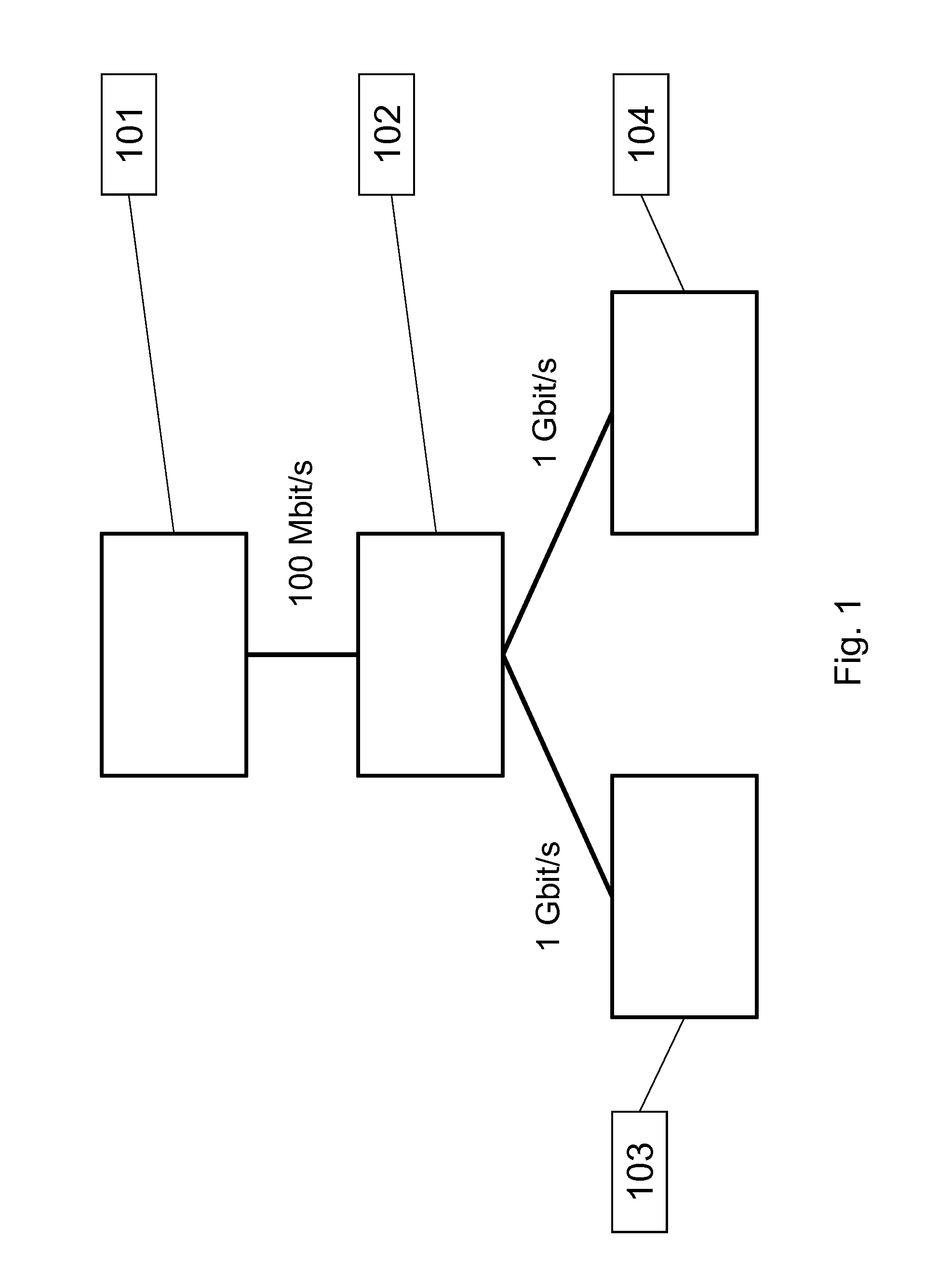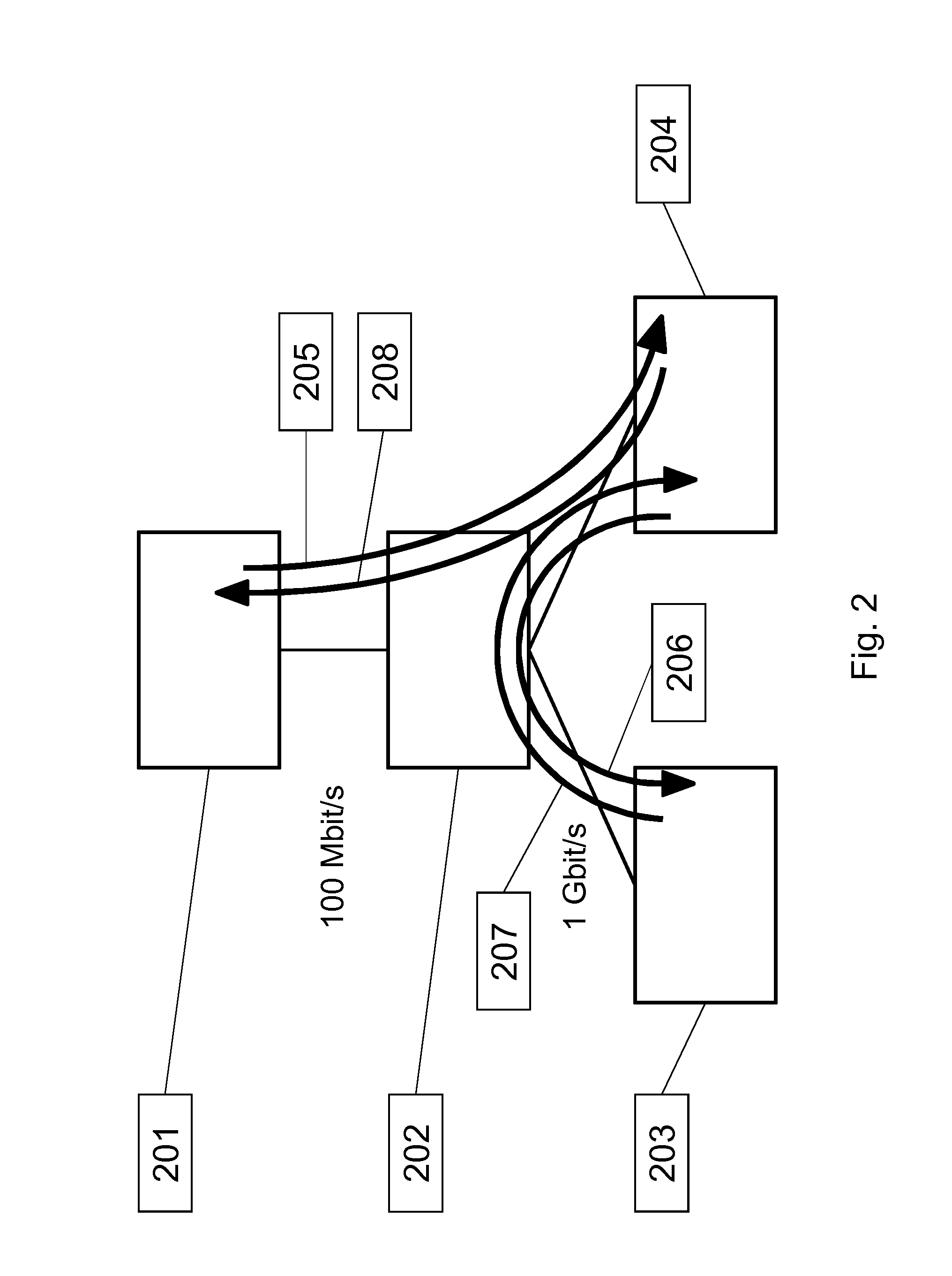Probe Routing in a Network
- Summary
- Abstract
- Description
- Claims
- Application Information
AI Technical Summary
Benefits of technology
Problems solved by technology
Method used
Image
Examples
Embodiment Construction
[0036]FIG. 1 shows a problem in network probing which is solved by the invention. The problem is that of how to probe a specific network route or a part of a specific route, sometimes known as a ‘hop’, when the entity performing the probing does not have access to any of the devices on that route. In this sense the lack of access means not being able to install probing and / or monitoring software on all the devices or on specific relevant devices on that route. The lack of access means the entity has no way of probing the specific route, let alone a hop on the route.
[0037]A very simple, and typical, network configuration is shown in which a home gateway 101 is connected to a switch 102 which is itself connected to two devices 103 and 104. Device A, 103, and device B, 104, are both end devices in this particular network. The switch 102 could also be any other network node for example a router, a wireless router, etc. The home gateway 101 is a boundary device on the edge of the network...
PUM
 Login to View More
Login to View More Abstract
Description
Claims
Application Information
 Login to View More
Login to View More - R&D
- Intellectual Property
- Life Sciences
- Materials
- Tech Scout
- Unparalleled Data Quality
- Higher Quality Content
- 60% Fewer Hallucinations
Browse by: Latest US Patents, China's latest patents, Technical Efficacy Thesaurus, Application Domain, Technology Topic, Popular Technical Reports.
© 2025 PatSnap. All rights reserved.Legal|Privacy policy|Modern Slavery Act Transparency Statement|Sitemap|About US| Contact US: help@patsnap.com



